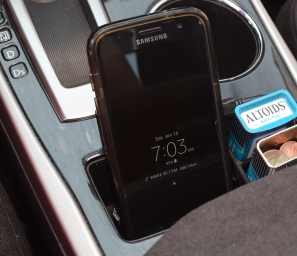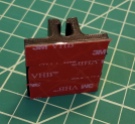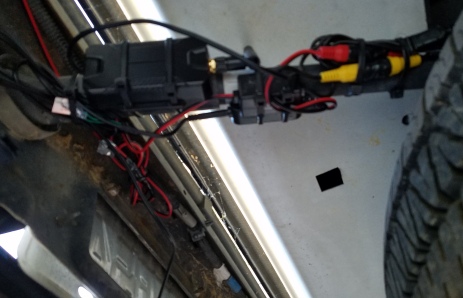My phone has wireless charging built in, and it is a wonderful feature. Very futuristic. I wanted this ability in my car when doing road trips or errands. I started with a flat lipped bed that would keep the phone in place. There is a spot behind the gear select knob that was just big enough for it to sit.
I took apart a small puck wireless charger and pulled the internals out. It was all one piece with 4 holes for me to mount to. Very convenient. Below are the first 3 PLA iterations of my design.

The first one on the left was too wide, and din’t have enough space cut out for fingers. The cover (below) didn’t sit well in the cavity either. The next one was better, and had more rounding. The last one had a tapered bottom to lighten the look, and a simple disk to cover up the electronics.
I put it in the car and test drove it for a few days. It was an awkward fit. the rubber pads underneath kept it from sliding around, but it was tight navigating it between the shifter and console. I sat it upright in the change well and found that orientation a lot easier to use.
This sticks up a lot higher than was really needed, but The principle is sound. I switched to PETG because the other car parts I printed in that material have held up well. I thought I had a slam dunk with the left one, but the angle of the cable was too low, and the circuit card needed a little fit adjustment. PLA and PETG shrink differently. If you prototype something in one material, then switch to another, tight fights might need adjustment.

I have run around with this version for a week now and love it. My phone falls right in and is picked up easily. The cable is well controlled and doesn’t get in the way. It took a few iterations to get here, but was worth it.
The only issue with using that space for my phone is that I typically put trash there. It was easy to see and clean out at the end of the day. Time for another print! I can fit a little trash can in the side pocket of my door. Measuring down inside the pocket calls for something like a pair of inside dividers. I didn’t have any, but I do now!
With tool created I measured the pocket width in a few spots and came up with a profile. It took some adjustments, but the second version clicked into place. That area of the car has a ton of curves. This didn’t match them perfectly, but it sits well and doesn’t stress the door mold too much. I gave this design a week as well.
It worked out like a charm, but could stand to be wider. I printed it 50% wider out of PETG to survive the heat, and called my car project done.
































































